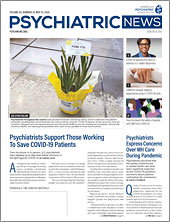Now that many of us have adapted to telehealth and electronic prescribing, the next hurdle is getting paid. If your practice, like mine, has been limited to cash and checks, your patients may be asking whether you accept any of several money transfer apps, credit cards, or other electronic forms of payment. This column is not an endorsement of any product. It merely reports on what I’ve learned as I researched the question: Which electronic payment system is most confidential with the least hassle?
Credit cards are certainly the most familiar. With an app like Square, you can enter a patient’s credit card information and have the money deposited directly into your bank account. You are charged 3.5% plus 15 cents per transaction for a manually entered credit card number (less if you swipe the card, but that’s not available via telehealth). Many medical practices accept credit card payments for copays, so this will feel familiar to patients. Some health care professionals record the patient’s credit card information and automatically charge the card for each appointment. If you’re planning to do this, you should have a written contract in which the patient agrees to the charges, including for late cancellations and no shows (if you have a policy about charges for these situations). Furthermore, it is imperative that you store the credit card information in a secure manner.
Many telehealth platforms include a payment feature. For example, DoxyMe displays a payment button to patients while they are in the virtual waiting room and during the session. Patients may enter a credit card number, which is processed through Stripe, an internet-based payment platform. Similar to other credit card payments, the charge is 2.9% plus 30 cents per transaction. Risk management advisors approve of this modality because the payment occurs through a HIPAA-compliant platform with which you already have a Business Associates Agreement (BAA).
Alternatively, you could choose one of a number of payment apps, such as Venmo, PayPal, or ApplePay. Each of these systems encrypt their data, but each can be hacked. They charge fees similar to credit cards for payments to businesses. For example, Venmo charges 2.9% plus 30 cents per transaction. Venmo advertises smaller fees for person-to-person transactions, but our practices are businesses. An additional concern with these platforms is their connections to social media accounts or other “outward-facing” connections on the internet. There is real concern that these companies scrape and sell transaction information. You can set your Venmo account to be private, but what if patients fail to do that and their payment for psychiatric services is able to be viewed? To what extent is the psychiatrist responsible for ensuring confidentiality despite patient error in the way patients use the app? The risk management advice I received from my malpractice carrier was to avoid these systems.
Another option is Zelle, a bank-to-bank money transfer system. According to my banker, all major banks participate in Zelle, but the individual customer must sign up to use it. I already use Zelle personally to receive rent payments. For transfers to a business account, Zelle charges a 2.5% fee, with a minimum of 25 cents and a maximum of $15 per transaction. Large transactions (that is, over $750) may not go through initially, but will be approved after a few smaller payments have been accepted. The transaction limit may depend on the payee’s bank policy. My banker assures me that data from Zelle are not sold. Although my risk manager expressed concern about Zelle, it does seem equivalent in privacy loss to writing a check: a patient’s name, address, and bank information are on checks, and that information goes to my bank. It isn’t automatic for a bank or Zelle to sign a BAA, without which this is not a HIPAA-compliant payment method. You may be able to get away with it during the pandemic while HIPAA rules are relaxed, but you shouldn’t continue to use Zelle once business practices return to normal.
It will be interesting to see which of the many ways we are adapting our practices will lead to permanent changes in the business of psychiatry and which are merely temporary adjustments. If you choose to use an electronic form of payment, consider whether you will continue after the pandemic subsides and the relaxed HIPAA restrictions are lifted. If so, you must be sure to present patients annually with a HIPAA notice of privacy practices and receive their signed acknowledgement of receipt. If not, how do you plan to get patients to revert to the old ways of doing business?
While reviewing this topic in a recent district branch meeting, one colleague wryly suggested an additional payment option: Barter for toilet paper and hand sanitizer. Let me know how that goes. ■

